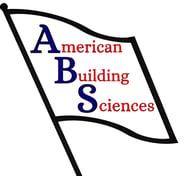Mold Sampling
Mold is typically collected through air or surface samples. Air samples involve running a known quantity of air through a device. This device contains a sticky surface (spore trap) or agar media (impactor), where mold spores become embedded. These samples are then sent to a laboratory to determine the number and types of mold present. The results are compared to a control sample to determine if the indoor air quality was impaired by microbial growth at the time of sampling. There are numerous spore-trap sample manufacturers, but Air-O-Cell cartridges are the most common. Agar media samples, typically supplied by the laboratory, are cultured to determine if the collected spores will grow under the right conditions (viability). Air samples may be inaccurate if collected over an incorrect time period and are essentially useless without outdoor controls.
Surface samples can be collected via tape-lift, swab, or bulk methods. Tape-lift samples use sticky tape pressed against a surface, collecting mold spores that adhere to the tape. This tape is then applied to a glass microscope slide. Swab samples use a moistened Q-tip-like swab to collect spores from a surface. Bulk samples involve removing a small piece of material that supports microbial growth. These samples are typically sent to a laboratory for analysis, though qualified professionals can examine them in the field using a microscope. Laboratories provide the genius, count, and coverage area of observed microbial growth. Homeowners usually request air sampling for mold concerns; however, a licensed Mold Assessor should explain the limitations of this technique before proceeding.
Air samples can indicate if there is an above-normal quantity of mold impairing indoor air quality, but they cannot pinpoint the mold's location. If homeowners suspect mold, they usually have an area of concern in mind. In such cases, surface sampling may be more cost-effective. If the goal is to confirm the absence of mold-impaired air quality, air samples combined with a thorough examination of the residence may be the best approach. Unnecessary mold sampling costs money, and American Building Sciences is sensitive to how we spend your funds. If you have mold concerns and would like to discuss the best way to address them, please contact us. We would be proud to earn your business.




